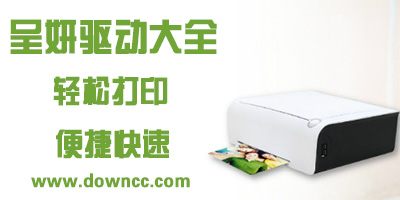
呈妍驱动大全由绿色资源网小编整理,小编为大家带来了几款照片打印机和证卡打印机驱动程序,包括s420、s423、p110s、p510l、p310w、cs200e、p520l等,用户按照自己所购买了的产品型号下载对应的驱动程序即可使用,欢迎有需要的朋友到绿色资源网下载使用!
诚研简介
诚研科技(苏州)有限公司(HiTi Digital Suzhou,Inc,简称HiTi)是一家专业的数码影像输出设备生产和制造公司。公司以热升华输出为核心技术,研发高品质的数码照片打印机、证卡打印机以及周边耗材等相关产品,是热升华数码照片打印机研发及制造领域唯一的华人厂商。目前诚研科技已推出多款热升华数码照片打印机。行销据点遍布全球各地。呈妍将以更齐全的产品线,满足更多消费市场的需求。相信以诚研科技在热升华数码照片打印机市场耕耘多年的经验与优异的研发能力,将会在更多领域创造更多的商机,为各行各业提供真正的数码乐趣。
点击进入:惠普打印机驱动、爱普生打印机驱动、佳能打印机驱动、兄弟打印机驱动、联想打印机驱动、映美打印机驱动、佳博打印机驱动
17.88M / 2016-06-15 / v3.1.0 官方最新版
呈妍s420驱动是诚研官方专为s420照片打印机打造的驱动程序,它可以有效的解决打印机不能正常的与电脑连接的问题,轻松进行招聘的打印,欢迎有需要的朋友到绿色资源网下载使用!官方介绍呈妍S420作为专属打印6寸相片的
21.33M / 2016-06-15 / v1.1.0.2 官方最新版
呈妍s423驱动适合购买了证照打印机s423的用户使用,如果你的打印机和电脑的连接出现了异常,该驱动程序可以帮你很好的解决这个问题,欢迎有需要的朋友到绿色资源网下载使用! 呈妍s423证照打印机参数简介打印方式热
11.83M / 2016-06-15 / v2.1.0 官方最新版
呈妍p110s驱动适合购买了该型号产品的用户进行使用,p110s是一款非常便捷的照片打印机,打印照片非常的方便,该驱动程序可以很好地解决打印机与电脑连接异常的问题,欢迎有需要的朋友到绿色资源网下载使用! 官方介
20.04M / 2016-06-15 / v1.7.0.9 官方最新版
呈妍p310w打印机是一款非常便捷的相片打印机,支持用电脑、手机、平板进行无线打印,也支援记忆卡,USB连接驱动,电脑连线等传输打印,安装驱动程序以后就可以非常便捷的进行电脑传输打印,欢迎有需要的朋友到绿色资源
20.80M / 2016-06-15 / v1.4.0.6 官方最新版
hitip520l驱动是由呈妍官方为照片打印机p520l打造的驱动程序,如果你的打印机与电脑的连接出现了异常而导致打印机无法正常的打印,下载此驱动程序可以帮你解决问题,欢迎有需要的朋友到绿色资源网下载使用! 呈妍p5
72.58M / 2016-06-15 / v2.5.0.16 官方最新版
hitics200e驱动适合购买了该型号证卡打印机的用户进行使用,打印机要想正常的打印证卡,就需要安装此驱动程序,欢迎有需要的朋友到绿色资源网下载使用!官方介绍HiTiCS-200e彩色证卡打印机为多功能识别证卡打印专家,
17.32M / 2016-06-15 / v3.7.0.29 官方最新版
hitip510l驱动适合购买了此型号打印机的朋友使用,用户安装了驱动程序以后,用户就可以非常便捷快速的进行照片的打印了,欢迎有需要的朋友到绿色资源网下载使用! hiti呈妍p510l打印机参数简介打印方式 热升华YMCO